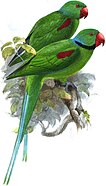Wikipedia:Today's featured article/June 2023
| << | Today's featured articles for June 2023 | >> | ||||
|---|---|---|---|---|---|---|
| Su | Mo | Tu | We | Th | Fr | Sa |
| 1 | 2 | 3 | ||||
| 4 | 5 | 6 | 7 | 8 | 9 | 10 |
| 11 | 12 | 13 | 14 | 15 | 16 | 17 |
| 18 | 19 | 20 | 21 | 22 | 23 | 24 |
| 25 | 26 | 27 | 28 | 29 | 30 | |
June 1
Tom Holland (born 1 June 1996) is an English actor, whose accolades include a British Academy Film Award and three Saturn Awards. His career began at age nine, when he auditioned for a role in Billy Elliot the Musical at London's Victoria Palace Theatre; he played the title role from 2008 to 2010. Holland made his film debut in the disaster drama The Impossible (2012) as a teenage tourist trapped in a tsunami. He achieved international recognition playing Spider-Man (Peter Parker) in six Marvel Cinematic Universe (MCU) superhero films, beginning with Captain America: Civil War (2016). The following year, Holland received the BAFTA Rising Star Award and became the youngest actor to play a title role in an MCU film in Spider-Man: Homecoming. The sequels Far From Home (2019) and No Way Home (2021) each grossed more than $1 billion worldwide, and the latter became the highest-grossing film of the year. Some publications have called him one of the most popular actors of his generation. (Full article...)
June 2
Prince Alfred (1780–1782) was the fourteenth child and the ninth and youngest son of King George III of Great Britain and Ireland and his queen, Charlotte of Mecklenburg-Strelitz. Alfred was baptised by Frederick Cornwallis, Archbishop of Canterbury, in the Great Council Chamber at St James's Palace on 21 October 1780. His godparents were his elder siblings George, Prince of Wales; Prince Frederick; and Charlotte, Princess Royal. Alfred was a delicate child. He suffered from "eruptions" on his face and, throughout his life, a cough. In 1782, Alfred became unwell and died after his inoculation against the smallpox virus. Although the household did not go into mourning (it was not prescribed for royal children under seven), his parents took the loss harshly. Alfred's early death, along with that of his brother Prince Octavius six months later, deeply distressed the royal family. In his later bouts of madness, King George imagined conversations with both of his youngest sons. (Full article...)
June 3
BioShock 2: Minerva's Den is a single-player downloadable content (DLC) campaign for the 2010 first-person shooter game BioShock 2, developed by 2K Marin and published by 2K Games. The player assumes the role of Subject Sigma, an armored and genetically modified human, or "Big Daddy"; Sigma must travel through Minerva's Den, the technological hub of the underwater city of Rapture, to download a schematic of the city's supercomputer. Minerva's Den was created by a small team within 2K Marin led by Steve Gaynor. They decided upon a small, personal story about identity and free will, which explores an unseen part of Rapture. Minerva's Den was initially released for PlayStation 3 and Xbox 360 consoles in August 2010, and was later released and reissued on other platforms. It was well received by critics, who praised its story, characters, and gameplay; reviewers, including those writing for Kotaku and Paste, considered it one of the best video game expansions of all time. (Full article...)
June 4
Sandy Koufax (born 1935) is a retired Major League Baseball (MLB) pitcher, one of baseball's all-time greats, who played for the Dodgers from 1955 to 1966. He had a losing career record before the 1961 season. After making adjustments, he became MLB's most dominant pitcher. In 1965 he set an MLB record with 382 strikeouts; it remains the top mark for National League (NL) pitchers and left-handers. Koufax won the Cy Young Award 3 times in 4 years, and was named the most valuable player of the NL in 1963. He was the first MLB pitcher to throw 4 no-hitters, and in 1965 became the first left-hander since 1880 to pitch a perfect game. Koufax is one of the most outstanding Jewish athletes; his decision not to pitch Game 1 of the 1965 World Series because it fell on Yom Kippur garnered national attention. After he retired at age 30 due to arthritis in an elbow, he became the youngest player ever elected to the Hall of Fame, in 1972. He has since worked for the Dodgers in a variety of capacities. (Full article...)
June 5
Martinus (died c. 641) was caesar of the Byzantine Empire from around 639 to 641. He was the fifth son of Emperor Heraclius and his second wife (and niece) Empress Martina. Martinus was elevated to caesar, a junior imperial title that placed him on the line of succession, at some point between 638 and 640 by his father. Heraclius died on 11 February 641, leaving the throne of the Byzantine Empire jointly to Martinus's half-brother Constantine III and his elder full brother Heraclonas. Constantine III soon died of tuberculosis, though some of his partisans alleged that Martina poisoned him. One such partisan, Valentinus, led troops to Chalcedon, across the Bosporus Strait from the imperial capital, Constantinople, to force Martina to install Constans, the son of Constantine III, as co-emperor. Valentinus seized Constantinople, forced the enthronement of Constans II in September or October 641, and deposed Martina, Heraclonas, and Martinus. Martinus was mutilated and exiled to Rhodes. He died soon after, possibly during or immediately after the surgery. (Full article...)
June 6
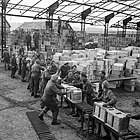
British logistics in the Normandy campaign played a key role in the success of Operation Overlord, the Allied invasion of France in June 1944. The Allies had to land sufficient assaulting forces to overcome the initial opposition, and build them up faster than the Germans could respond. The British Second Army and Canadian First Army included six armoured divisions (including the Polish 1st Armoured Division), ten infantry divisions, two airborne divisions, nine independent armoured brigades and two commando brigades. Logistical units included 6 supply unit headquarters, 25 base supply depots, 83 detail issue depots, 25 field bakeries, 14 field butcheries and 18 port detachments. During the first seven weeks after the Normandy landings on D-Day, 6 June 1944, the advance was much slower than anticipated, but by 26 July, 675,000 personnel, 150,000 vehicles, 690,000 tonnes (680,000 long tons) of stores and 69,000 tonnes (68,000 long tons) of bulk petrol had been landed. (Full article...)
June 7
Tropical Storm Vicente was a small tropical cyclone that made landfall as a tropical depression in the Mexican state of Michoacán on October 23, 2018, causing deadly mudslides. The 21st named storm of the 2018 Pacific hurricane season, it originated from a tropical wave that traveled westward from Africa's western coast across the Atlantic and entered the Eastern Pacific on October 17. The disturbance formed into a tropical depression early on October 19 and became Tropical Storm Vicente later that day. It peaked on October 20 with winds of 50 mph (85 km/h) and a minimum pressure of 1,002 mbar (29.59 inHg). After making landfall near Playa Azul on October 23, Vicente quickly lost organization and dissipated a few hours later. The storm caused torrential rainfall in the Mexican states of Michoacán, Oaxaca, Veracruz, Hidalgo, Jalisco, Guerrero, and Colima; the rainfall exceeded 12 inches (300 mm) in Oaxaca. The storm left 16 people dead. (This article is part of a featured topic: 2018 Pacific hurricane season.)
June 8
Trading Places is a 1983 American comedy film directed by John Landis. The plot focuses on commodities broker Louis Winthorpe III, played by Dan Aykroyd, and street hustler Billy Ray Valentine, played by Eddie Murphy (pictured), who are the subject of a bet to test how each man will perform when their lives are swapped. Trading Places was the fourth-highest-grossing film of 1983 in the United States and Canada and received generally positive reviews, with critics praising the cast and the film's revival of the screwball comedy genre. It received an Academy Award nomination for Best Score and won two BAFTA awards. The film has been praised as one of the greatest comedy films and Christmas films ever made, but retrospective assessments have criticized its use of racial jokes and language. In 2010, the film was referenced in congressional testimony concerning the reform of the commodities trading market designed to prevent the insider trading demonstrated in Trading Places. (Full article...)
June 9
The 1880 Greenback National Convention met from June 9 to 11 in Chicago to select candidates and write a platform for the Greenback Party in the presidential election. Delegates chose James B. Weaver (pictured) of Iowa for President and Barzillai J. Chambers of Texas for Vice President. The Greenback Party was a response to government policy tightening the money supply and returning to the gold standard. Many felt that issuance of "greenbacks" would improve economic conditions. Weaver, the favorite for the presidential nomination, won on the first ballot; Chambers, one of his defeated rivals, was his running mate. More tumultuous was the fight over the platform, as delegates from disparate factions of the left-wing movement clashed over women's suffrage and Chinese immigration. In the presidential election, the party received only about three percent of the vote, as Republican congressman James A. Garfield of Ohio triumphed. (This article is part of a featured topic: 1880 United States presidential election.)
June 10
USS Massachusetts (pictured) was an Indiana-class pre-dreadnought battleship. Authorized in 1890, she launched on June 10, 1893. Massachusetts served in the Spanish–American War and took part in the blockades of Cienfuegos and Santiago de Cuba. After the war, she served with the North Atlantic Squadron where she suffered an explosion in a gun turret and ran aground twice. She was recommissioned in 1910 for annual cruises for midshipmen, and in 1917 she served as a training ship for gun crews for World War I. Her final decommission was in March 1919 under the name Coast Battleship Number 2 so her name could be reused for USS Massachusetts (BB-54). In 1921, she was scuttled in shallow water near Pensacola, Florida, and used as a target for experimental artillery. The wreck was declared the property of the State of Florida in 1956. In 1993 it became a Florida Underwater Archaeological Preserve and was included in the National Register of Historic Places. (Full article...)
June 11
The short-beaked echidna is one of four living species of echidna. It is covered in fur and spines, has a distinctive snout to help detect its surroundings, and uses a specialized tongue to catch insects. The short-beaked echidna has extremely strong front limbs and claws, which allow it to burrow quickly. It repels predators by curling into a ball and deters them with its spines. During the Australian winter, it goes into deep torpor and hibernation. As the temperature increases, it emerges to mate. Female echidnas lay one egg a year and the mating period is the only time the solitary animals meet. A newborn echidna grows rapidly on its mother's milk and is expelled into the mother's burrow when they grow too large for the mother's pouch. They leave the burrow when they are around six months old. The species is found throughout Australia and in coastal and highland regions of eastern New Guinea. It is not threatened with extinction, but human activities have reduced its distribution in Australia. (Full article...)
June 12
BTS is a South Korean K-pop boy band. They debuted in 2013; by 2017, they had entered the global music market, leading the Korean Wave into the U.S., and becoming the first Korean ensemble to receive a Gold certification from the RIAA for their single "Mic Drop". They became the first act from South Korea to top the Billboard 200 with Love Yourself: Tear (2018). With a large, well-organized worldwide fan base, BTS is the best-selling artist in South Korean history, having sold in excess of 30 million albums. They have three times addressed the U.N. General Assembly, and visited the White House. Dubbed the "Princes of Pop", BTS has also appeared on Time's lists of the 25 most influential people on the internet (2017–2019) and the 100 most influential people in the world (2019). In 2018, they became the youngest recipients of the South Korean Order of Cultural Merit. The group is now on pause to allow the members to complete their required military service, with a reunion planned for 2025. (Full article...)
June 13
Diodorus scytobrachion was a silesaurid dinosauromorph that lived during the Late Triassic of what is now Morroco, and is the only known member of genus diodorus. Fossils dating to about 230 million years ago were discovered in the Timezgadiouine Formation of the Argana Basin, and were used to name the new genus and species. The genus name honors the mythological king Diodorus and the historian Diodorus Siculus; the specific name is ancient Greek for "leathery arm" and also honors the mythographer Dionysius Scytobrachion. The holotype specimen is a partial dentary bone (front of the lower jaw), and assigned specimens include isolated teeth, two humeri, a metatarsal, and a femur. Diodorus is estimated to have been around 2.3 m (7.5 ft) long, with features thought to be shared by most silesaurs, including leaf-shaped teeth, long limbs, and a quadrupedal posture. It is believed to have been principally though not entirely herbivorous. (Full article...)
June 14
Science Fiction Adventures was a US science fiction magazine, published from 1956 to 1958 by Royal Publications as a companion to Infinity Science Fiction and edited by Larry Shaw for all 12 issues. It focused on longer articles than Infinity, mainly action-adventure stories. Historian Mike Ashley considers that this was the best of similar magazines. Robert Silverberg was a prolific contributor, sometimes pseudonymously, and he also collaborated with Randall Garrett in the first issue. Other writers who occasionally appeared included Harlan Ellison, Cyril M. Kornbluth, Algis Budrys, and Harry Harrison. Ed Emshwiller contributed cover art for nine issues, with John Schoenherr doing one other. The magazine was cancelled because of disappointing sales; the last issue was for June 1958, and Infinity only lasted a few months longer. A British reprint edition commenced in early 1958, edited by John Carnell and continued for 32 issues by using reprints and original material. (Full article...)
June 15
.jpg/130px-Margaret_Abbott_Charles_Dana_Gibson_(cropped).jpg)
Margaret Ives Abbott (June 15, 1878 – June 10, 1955) was an American amateur golfer. She was the first American woman to win an Olympic event: the women's golf tournament at the 1900 Summer Olympics. Born in Calcutta in 1878, Abbott moved with her family to Chicago in 1884. She joined the Chicago Golf Club in Wheaton, Illinois, where she was coached by Charles B. Macdonald and H. J. Whigham. In 1899, she traveled with her mother to Paris to study art. In October 1900, along with her mother, she signed up for a women's golf tournament without realizing that it was the second modern Olympics. Abbott won the tournament with a score of 47 strokes; her mother tied for seventh place. Abbott received a porcelain bowl as a prize. In December 1902, she married the writer Finley Peter Dunne. They later moved to New York and had four children. Abbott died at the age of 76 in 1955, never realizing that she won an Olympic event. She was not well known until Paula Welch, a professor at the University of Florida, researched her life. In 2018, The New York Times published her belated obituary. (Full article...)
June 16
Cyathus is a genus of bird's nest fungi in the family Nidulariaceae, so named since they resemble tiny bird's nests filled with "eggs". The "eggs", or peridioles, are attached to the inner surface of the fruiting body by a cord of mycelia. Both surfaces of the cup may be ridged longitudinally, a taxonomic characteristic that has traditionally served to distinguish between species. The 45 species are widely distributed globally and some are found in most countries, although a few are localised. Cyathus stercoreus is considered endangered in a number of European countries. Generally considered inedible, Cyathus species are saprobic, obtaining nutrients from decomposing organic matter. They usually grow on decaying woody material, on cow and horse dung, or directly on humus-rich soil. The life cycle of this genus allows them to reproduce both sexually, with meiosis, and asexually via spores. Phylogenetic analysis is providing insights into the relationships between the various species. (Full article...)
June 17
Li Rui (1917 – 2019) was a politician, historian and Chinese Communist Party (CCP) dissident. Joining the CCP in the 1930s, by 1958, he was vice-minister of the Ministry of Water Resources. His vocal opposition to the proposed Three Gorges Dam brought him to the attention of the Chairman of the CCP, Mao Zedong. Li impressed Mao, who made him his personal secretary for industrial affairs. However, Li defied Mao at the 1959 Lushan Conference, and was expelled from the party and sent to a prison camp, spending eight years in solitary confinement. After Mao's death in 1976, Li regained an influential position in the CCP, but was forced to resign because he was unwilling to give preference to children of powerful party members. In retirement, Li wrote extensively. He called for freedom of speech, freedom of the press, and democracy within a socialist framework, but was censored in the Chinese press. Li remained a Communist Party member, respected but isolated, until his death at age 101 in 2019. (Full article...)
June 18
Albert Levitt (March 14, 1887–June 18, 1968) was an American attorney and official who ran for office many times, receiving only a small percentage of the vote. He attended Harvard Law School, and helped draft the Equal Rights Amendment. After serving as a law professor, he settled in Connecticut with his first wife, the suffragist Elsie Hill, and involved himself in politics. The faction he led affected the outcome in several races. In 1933, he was given a position in the Franklin Roosevelt administration. While a judge in the Virgin Islands in 1935, he ordered that women there must be allowed to register and vote. After leaving government work in 1937, Levitt challenged the appointment of Hugo Black to the Supreme Court; in its decision, Ex parte Levitt, the court refused to consider his claims. He moved to California, and began to run as a fringe candidate in Republican primaries, including in the 1950 Senate election, finishing sixth out of six, behind the winner, Richard Nixon. (Full article...)
June 19
Gather Together in My Name (1974) is the second of seven memoirs by Maya Angelou,. The book begins just after I Know Why the Caged Bird Sings, and follows Angelou from the age of 17 to 19. Written three years after Caged Bird, the book "depicts a single mother's slide down the social ladder into poverty and crime." She expands upon many themes that she started discussing in her first autobiography, including motherhood and family, racism, identity, education and literacy. Gather Together was not as critically acclaimed as Caged Bird, but received mostly positive reviews and was recognized as being better written than its predecessor. The book's structure, consisting of a series of episodes tied together by theme and content, parallels the chaos of adolescence, which some critics feel makes it an unsatisfactory sequel to Caged Bird. The title is taken from the Bible; it also conveys how one black woman lived in the white-dominated society of the U.S. following World War II. (This article is part of a featured topic: Maya Angelou autobiographies.)
June 20

The North East Line is a high-capacity Mass Rapid Transit (MRT) line in Singapore. Operated by SBS Transit, the 20-kilometre (12 mi) line runs from HarbourFront station in southern Singapore to Punggol station in the northeast via Chinatown, Little India, Serangoon and Hougang. Completed at a cost of S$5 billion, 14 of 16 stations of the line began operations on 20 June 2003. Buangkok station opened on 15 January 2006, and Woodleigh station began operations on 20 June 2011. A one-station extension to Punggol Coast station is expected to be completed in 2024. Alstom rolling stock – C751A and C751C – runs on the line, which is fully automated using the moving-block Alstom Urbalis 300 CBTC signalling system. The stations are wheelchair-accessible, and most of them are Civil Defence shelters designed to withstand airstrikes and chemical attacks. 18 artworks are displayed across its 16 stations as part of the MRT network's Art-in-Transit programme. (Full article...)
June 21
The battle of Lake Trasimene was fought when a Carthaginian force under Hannibal ambushed a Roman army commanded by Gaius Flaminius on 21 June 217 BC, during the Second Punic War. The Romans had positioned an army on each side of the Apennine Mountains, but were surprised when a 50,000-strong Carthaginian army crossed by a difficult but unguarded route. Flaminius, in charge of the nearest Roman army, set off in pursuit. Hannibal sprung his ambush on the north shore of Lake Trasimene, to the south of Cortona. With the Carthaginians attacking unexpectedly from the flank and the rear, possibly in poor visibility, there was no chance for the Romans to form even a rudimentary fighting line and they were defeated after three hours hard fighting. The trap failed to close on 6,000 Romans, but they surrendered later in the day and so all 25,000 Romans engaged were killed or captured. This destruction of an entire army as a result of an ambush by another army is widely considered a unique occurrence. (Full article...)
June 22
Cerro Tuzgle is a dormant stratovolcano in northwestern Argentina. It is a prominent volcano of the back-arc of the Andes and lies about 280 kilometres (170 mi) east of the main volcanic arc. Tuzgle is 5,486 metres (17,999 ft) high above sea level and grew during different stages over a caldera and lava domes. Some major lava flows emanate from the summit crater, and one confirmed and one possible flank collapse unit as well as an ignimbrite sheet are associated with this volcano. The first volcanic activity of Tuzgle occurred 650,000 years ago. Subsequently, lava domes were erupted and several lava flows; scientists have proposed two different schemes of naming the units. The latest lava flows are dated at 300,000 years ago and volcanic activity may have continued into the Holocene. Several thermal springs are associated with the volcano, and some have been investigated for possible geothermal energy production. Sulfur was formerly mined on the mountain. (Full article...)
June 23
Banksia grossa is a shrub in the plant family Proteaceae endemic to Southwest Australia. It is one of 14 species of banksia of the series Abietinae, which bear round or oval inflorescences. Collected in 1965, it was described in 1981 by Alex George. Its thick leaves and large seeds distinguish it from other Abietinae. Found in sand or sand over laterite among heath between Eneabba and Badgingarra in Western Australia, it grows as a many-stemmed shrub to 1 m (3 ft) high with narrow leaves and oval brownish flower spikes up to 10 cm (4 in) high, composed of hundreds of individual flowers. Flowering occurs throughout the cooler months. Old flower spikes develop woody follicles which bear the seeds. The plant takes 5 to 7 years to reach maturity and begin flowering. After bushfire, Banksia grossa regenerates from its woody lignotuber; bushfires also stimulate the release of seeds, which germinate after disturbance. Visitors to inflorescences include insects and the nocturnal white-tailed dunnart. (Full article...)
June 24
The Goodwin Fire was a wildfire that burned 28,516 acres (115.40 km2) in the U.S. state of Arizona from June 24 to July 10, 2017. The fire destroyed 17 homes and damaged another 19 structures, but no one was killed. The fire was first detected on June 24, 2017, by a two-man fire patrol that spotted smoke in the Bradshaw Mountains near Prescott, Arizona. Fed by high winds and undisturbed growths of chaparral, and with fire crews impaired by difficult terrain, the fire grew from 150 acres (61 ha) on June 24 to 25,000 acres (10,000 ha) on June 29. Several communities in Yavapai County were evacuated, and Arizona State Route 69 was closed. Firefighting aircraft were grounded twice by civilian drones operating illegally in the burn area, but firefighters made rapid progress containing the fire's spread after June 28, and it was fully contained on July 10. Investigators did not determine any particular cause for the fire. (Full article...)
June 25
Panagiotis Kavvadias (1850–1928) was a Greek archaeologist. He was responsible for excavations of Epidaurus and the Acropolis of Athens, and on his native Cephalonia. As Ephor General, the head of the Greek Archaeological Service, from 1885 until 1909, Kavvadias oversaw its expansion and the introduction of Law 2646/1899 which increased the state's powers to prevent illegal excavations and antiquities smuggling. He has been credited with completing the transformation of the Acropolis "from castle to monument", uncovering many ancient monuments (map pictured). He oversaw the opening of the National Archaeological Museum in Athens and organised its first collections. He was also a professor at the University of Athens. Regarded as energetic, centralising and autocratic, he was criticised by native Greek archaeologists, and removed from offices in 1909. He was able to return to public and academic life from 1912, and remained active in Greek archaeology until his death. (Full article...)
June 26
Iwan Roberts is a Welsh former professional footballer who played as a striker, including for the Welsh national team. His footballing career started at Watford in 1986, and he also represented Huddersfield Town, Wolverhampton Wanderers, Gillingham and Cambridge United He made 647 league appearances during his career, almost half as a player for Norwich City, whom he represented for seven years. He scored 61 goals in total over the 1998–99, 1999–2000 and 2000–01 seasons, and was elected to the Norwich City F.C. Hall of Fame. Since retiring as a player, Roberts, who speaks fluent Welsh, has worked as a commentator for Sky Sports, BBC Radio Cymru and BBC Cymru Wales. His 2004 book, All I Want for Christmas ..., a reference to his gap-toothed appearance, prompted praise, but also controversy over an admission that he once intentionally stepped on a player's back. In recent years, Roberts has supported research into dementia, and has attributed his own memory difficulties to heading a football. (Full article...)
June 27
The American Bible Challenge (2012–2014) is a Biblical-themed American television game show created by Game Show Network. The series is hosted by Jeff Foxworthy (pictured), joined by Kirk Franklin in the second season. Each season of the series is played as a nine-episode tournament with six episodes of opening rounds, two semi-finals, and a final. Each opening round starts with three teams of three contestants answering questions about the Bible. One contestant from each team participates in the following round. The two highest-scoring teams compete in a final one-minute round, and a $20,000 prize is donated to a charity of the winning team's choice. Winners advance to semi-final games and then to a final game with a grand prize of $100,000, for a total possible payout of $140,000 for the champion's charity. The show became GSN's highest rated original program in the history of the network. In 2014, the show received a nomination at the 41st Daytime Emmy Awards for Outstanding Game Show. (Full article...)
June 28
The 1985 Tour de France took place between 28 June and 21 July 1985. The course ran over 4,109 km (2,553 mi) and consisted of a prologue and 22 stages. The race was won by Bernard Hinault (riding for the La Vie Claire team), who equalled the record by Jacques Anquetil and Eddy Merckx of five overall victories. Second and third respectively were Hinault's teammate Greg LeMond and Stephen Roche. Hinault took the race leader's yellow jersey on the first day, in the opening prologue time trial, but lost the lead to Eric Vanderaerden (Panasonic–Merckx–Agu) after stage 1 because of time bonuses. He regained it in stage 8, and held it the rest of the way despite bronchitis, which severely hampered his performances. For LeMond's assistance, Hinault pledged to support him for overall victory the following year, which LeMond gained. The large number of time trials in the 1985 edition of the race were key to its outcome, leading to a decrease in time trial kilometres for subsequent Tours. (Full article...)
June 29
The Seychelles parakeet or Seychelles Island parrot is an extinct species of parrot that was endemic to the Seychelles on the islands of Mahé, Silhouette, and possibly Praslin. It was scientifically named Palaeornis wardi by Edward Newton in 1867; though it was later moved to the genus Psittacula, genetic studies have led some researchers to suggest it should belong in Palaeornis. The parakeet was about 41 cm (16 in) in length, with a long, pointed tail. The male was mainly green, with blue on parts of the head, a black stripe on the cheek, a yellowish underside and a purple-red patch on the wings. The female lacked the cheek-stripe and the juvenile resembled the female. The parakeet associated in groups within forests and made flights between communal roost sites and feeding areas. It adapted to cultivated areas and its diet included fruit. Though abundant in 1811, it had become rare by 1867 due to human persecution for its perceived damage to crops. The last confirmed individual was shot in 1893. (Full article...)
June 30
Benjamin Morrell (1795–1839?) was an American sealing captain and explorer who between 1823 and 1831 made a series of voyages, mainly to the Atlantic, the Southern Ocean and the Pacific Islands. Many of the claims in his ghost-written memoir, A Narrative of Four Voyages, especially those relating to his Antarctic experiences, have been disputed by geographers and historians. In 1823 he took the sealer Wasp for an extended voyage into sub-Antarctic waters, and it was from this time that much of the controversy surrounding his reputation developed. Many of his claims—the first landing on Bouvet Island, a Weddell Sea penetration to 70°S, an extremely rapid passage of 3,500 miles (5,600 km) at improbably high latitudes, and the discovery of a coastline he named New South Greenland—have been doubted or proved false. He ended his career as a fugitive, having wrecked his ship and misappropriated parts of the salvaged cargo. (Full article...)



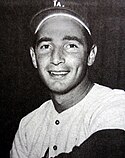


.jpg/123px-James_Weaver_-_Brady-Handy_(cropped).jpg)
._Starboard_bow_at_wharf%2C_06-1901_-_NARA_-_535432.tif/lossy-page1-158px-Massachusetts_(BB2)._Starboard_bow_at_wharf%2C_06-1901_-_NARA_-_535432.tif.jpg)

.jpg/223px-BTS_during_a_White_House_press_conference_May_31%2C_2022_(cropped).jpg)

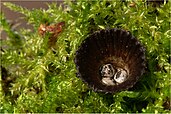
.jpg/124px-Albert_Levitt_at_Supreme_Court_(cropped).jpg)

.png/126px-Hannibal_Slodtz_Louvre_MR2093_(cropped2).png)

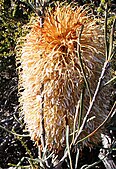
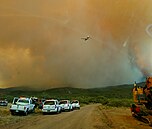


.jpg/114px-Jeff_Foxworthy_at_Resch_Center_(cropped).jpg)

